
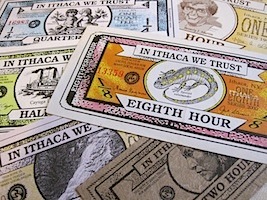
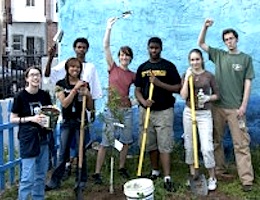
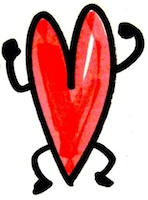
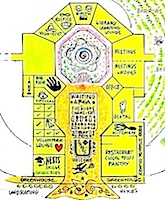
 |
 |
 |
 |
 |
| PAUL
GLOVER ESSAYS: community
control of food, fuel, housing, health care,
planning, education, finance. |
| HOME | INTRO | CURRENCY | SUCCESSES | HOW-TO BOOK | PUBLICITY | ESSAYS |
ForwardAnyone who is aware of the rapid decline of US. Atlantic seaboard cities in the last 20 years has to be struck by the potential magnitude of collapse that could overcome the greatest megalopolitan artifact on the Pacific Coast, Los Angeles. Already overwhelmed by traffic congestion and exhaust fumes its population continues to increase at a near boom rate; already overextended by thousands of miles for basic supplies of water, food, and energy its demands escalate while possibilities for fulfilling them become desperately tentative. |
The veneer is cracking now faster than it can be re-cosmeticized and eventually thousands of blocks of dried-up one-story ruins and rusting station wagons may compete with the bombed-out vistas of South Bronx for our memory of the Late Industrial period. Paul Glover shows a path that can salvage the future for people who live here, and if Los Angeles as presently conceived is lost at least it will be transformed into a place where people can actually walk around, something nobody does in LA today. ---by Peter Berg, Editor, Raise the Stakes: the Planet Drum Review, Winter 1983. Other quotes about this book |
INTRODUCTION españolTotal transformation is the Los Angeles style. Just two hundred years ago this place sheltered naked hunter-gatherers who danced the porpoise dance. Within sixty years they were trampled by Latinos and their half million cattle. Thirty years later Anglos evicted the Latinos and plowed up pasture for wheat. Thirty years after that the wheat yielded to giant orchards. Another fifty years saw this food torn out for factories and homes. The latest fifty years have raised skyscrapers, superhighways and a new Latino majority. This sixth most populous spot on earth has
killed Nature.
Environmental protection means chaining a dog in the yard. Brown air
turns
every clean, pink lung gritty yellow. Trees endure like parsley on an
empty
plate. Fertile soil lies smothered under asphalt.
This sixth most populous spot on earth has
killed Nature.
Environmental protection means chaining a dog in the yard. Brown air
turns
every clean, pink lung gritty yellow. Trees endure like parsley on an
empty
plate. Fertile soil lies smothered under asphalt.Here is the American metropolis supreme: Water is imported across hundreds of miles of dry land in the world's longest aqueducts; Fuel through the world's largest, longest electric wires sparks 1500 square miles of humans; Food trucked daily hundreds of miles to America's largest wholesale market, on Central Avenue, serves an appetite larger than most world nations'; Metal extracted worldwide forges products for consumers consuming for the pleasure of consumption. |
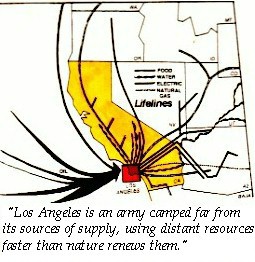 If nature is the ultimate law and order, is Southern California doomed? Our region is today so uninhabitable yet so inhabited that it must transform or die. Sooner or later it must generate its own food, fuel, water, wood, and ores. It must use these at the rate nature provides them. It can. Los Angeles has four awesome powers:
|
|
How do we begin to employ these strengths to create a fruitful, self-reliant city, a sensual city worthy of excellent people and land? How do we prove the region's resources can sustain us? The first work of citizen planners would be to redesign Los Angeles as boldly as government and industry do: to plan transformations with solar technology and orchards like commerce plans with highways and realty. We would plan broadly enough to coordinate regional use of our resources and flexibly enough to rely on initiatives by individuals and neighborhoods. CITIZEN PLANNERS for FULL EMPLOYMENT, ECOLOGY, and NEIGHBORHOOD POWERCitizen Planners in Los Angeles recommends that neighborhoods inventory their resources and create preliminary designs to best juxtapose homes with croplands, solar turbines, water mains, and solar freight rail. An environmental inventory suggested by Citizen Planners states aims toward which orderly transitions can be planned, and shows how to fasten the nuts and bolts of metropolitan-scale alternate technology. It presents a city wholly different from the one we know. Experience reminds us that even the immediate problems of crime, traffic, poison air, unemployment, and inflation are not relieved by merely patching the urban mess. Time binds us to great change. RETURN TO INDEXHere follows a short summary of the inventory's precepts: A. Natural resources would be used at the rate they naturally renew. This is the heart of ecology. 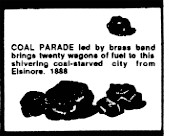
B. Food and fuel would be produced at household, neighborhood, municipal, and regional levels. This is the heart of social cohesion. C. The economy would become a "mutual enterprise" system. Work would be apportioned to enable all to labor. This is the heart of dignity. D. Culture would become decentralized and participatory, releasing the creative genius in everyone. This is the heart of joy. |
The inventory explores 13 subsystems of the city: Food, Water, Fuel, Housing, Solid Waste, Industry, Transport, Fire Protection, Air, Education, Health, Government, and Culture.AIMS: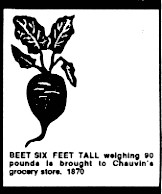 FOOD:
To produce within homes, neighborhoods, and cities of this region all
food eaten here. To create high-quality vegetarian diets by organic
cultivation. FOOD:
To produce within homes, neighborhoods, and cities of this region all
food eaten here. To create high-quality vegetarian diets by organic
cultivation.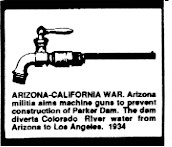
WATER: to bring the most water for the most necessary purposes from the shortest distances with the least use of fuel. 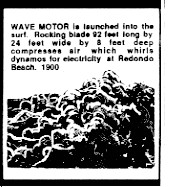
FUEL: To reduce fuel demand and to power all homes, vehicles, and machines from the sun. To use wind, wave, muscle, and municipalized petroleum in reserve. HOUSING: To craft solar greenhouse homes of many types, designed by residents to fuel, feed and delight themselves and which are part of beautiful self-reliant neighborhoods.SOLID WASTE: To reduce waste to zero by producing durable essentials and recycling everything. INDUSTRY: To produce durable essential tools from raw materials of this region, in neighborhood shops owned and managed by workers. We learn to luxuriate in the necessities before the necessities become luxuries.
CULTURE: To encourage a decentralized participatory culture expressing the bounty of the planet and of this region, the beauties of its people, and our pride in working together to build and enjoy a sensual city. |
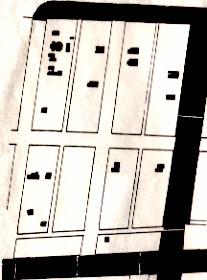 PAST:Fifty years ago several homes were built on a beanfield. Graded dirt streets connected to a concrete boulevard. Food, fuel and most water were produced locally. Trolleys made transit easy. Air was clean. Homes were safe unlocked. |
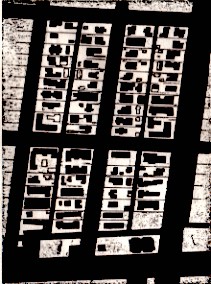 PRESENT:The land is mostly paved and built on. 400 people live in 74 houses. Most rent. Food, fuel, metals and water are piped, pumped and trucked from great distances. Many commute far to work. Fuel is wasted, air is poor. Crime confines women at night. Garbage is the main product of the neighborhood. |
Community land trusts and
limited equity
co-ops form to give renters control of land and housing. Some
backyard paving, driveways, alleys and fences are removed for
gardens and playgrounds. Fruit and nut trees (green areas)
are planted. Solar collectors are installed. Kitchen waste is
composted. |
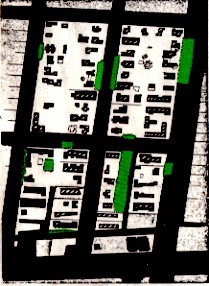 FUTURE: TWOMost garages are removed to extend gardens and food trees. Cars are parked at neighborhood's edge. Solar cells produce most electricity. Compost toilets improve soil and reduce water use. Metal and wood are stored for recycling. Food, tools and skills are shared and traded. |
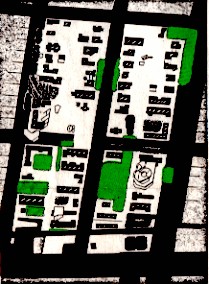 FUTURE: THREEConstruction of two solar co-op homes (ecolonies) begins. Some houses are removed, their residents share temporary housing. Land is freed for crops and play. Orchards double. Neighborhood industries produce durable essential goods and reduce need fro commuting. Crime declines as neighbors work together outdoors. |
First ecolony is completed, two others are being built. They
are semi-underground for earth cooling and heating. A
spyramid (spiral pyramid) community-center is begun in the middle.
Ocean water is desalinated. Walkways are relaid as
brilliant mosaics. Bikeways connect neighborhoods. A trolley
system is revived. |
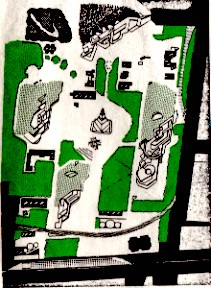
FUTURE: FIVEThree colonies are complete, the fourth is excavated. Solar turbines end industrial pollution. Extensive orchards are fireproofed with water wall sprayers.Community center is complete. Policy is made by full assemblies. Trolley system is solar powered. Auto traffic is down by half. Breathing is pleasure. |
Ecolonies are nearly complete. |
The neighborhood has become an orchard looped with bikeways and solar
rail. All food is from interneighborhoood sharing.
Most physical and emotional needs are met within walking
distance. Cars are gone. Population stabilizes at
430. New rituals evolve to celebrate family, friendship,
harvests,
quiescence, sex, eternity, love, invention and sun. |
PRESENT
 FOOD:
There are a few small gardens, but 65% of the land is paved or built
on. Nearly all food is trucked from distant factory farms. It is tough
and bland, soaked with pesticides, controlled by a few powerful
companies. Half the U.S. grain harvest is excreted by animals
generating one-tenth the nourishment in meat form. A few neighbors
analyze soils for lead content.
FOOD:
There are a few small gardens, but 65% of the land is paved or built
on. Nearly all food is trucked from distant factory farms. It is tough
and bland, soaked with pesticides, controlled by a few powerful
companies. Half the U.S. grain harvest is excreted by animals
generating one-tenth the nourishment in meat form. A few neighbors
analyze soils for lead content. WATER:
Half flows from the Colorado River and Sierra
Mountains through aqueducts, and half is drawn from local wells. It is
pumped to homes in iron pipes laid along the alley 60 years ago.
Three-quarters of it is used to water lawns, wash cars, and flush
toilets. It is "unfit even for showering," according to the California
State Department of Health. Rainwater is flushed to the ocean through
storm sewers. Bottled water is popular.
WATER:
Half flows from the Colorado River and Sierra
Mountains through aqueducts, and half is drawn from local wells. It is
pumped to homes in iron pipes laid along the alley 60 years ago.
Three-quarters of it is used to water lawns, wash cars, and flush
toilets. It is "unfit even for showering," according to the California
State Department of Health. Rainwater is flushed to the ocean through
storm sewers. Bottled water is popular. FOOD: Some backyard paving, driveways, alleys, and
fences are removed. Gardens are expanded privately and cooperatively.
Stret strips are reclaimed for dwarf fruit trees and berries. Homes at
upper right attach greenhouses.
FOOD: Some backyard paving, driveways, alleys, and
fences are removed. Gardens are expanded privately and cooperatively.
Stret strips are reclaimed for dwarf fruit trees and berries. Homes at
upper right attach greenhouses. 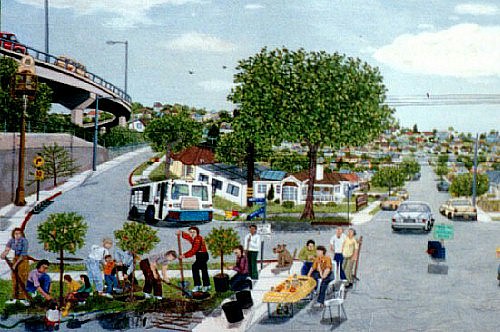 Some
alleys are gardened. These are fertilized by horse manures and
chippings. Experiments determine best tree varieties. One hundred fruit
and nut trees are planted.
Some
alleys are gardened. These are fertilized by horse manures and
chippings. Experiments determine best tree varieties. One hundred fruit
and nut trees are planted. Local currency
is introduced.
Local currency
is introduced.
 FOOD:
Three-hundred-fifty dwarf trees in streets and
blockyards yield fruits and nuts. Varieties are selected so they ripen
one after another all year. More solar greenhouses and solar drying
further extend seasons of availability. Intensive raised bed vegetable,
berry and herb gardens supply the neighborhood and local farmer's
markets. Food production is also increased by fertilizer from compost
toilets and mulch from leaves. Companion planting stimulates growth and
controls bugs. Rooftop beehives pollinate and give honey.
FOOD:
Three-hundred-fifty dwarf trees in streets and
blockyards yield fruits and nuts. Varieties are selected so they ripen
one after another all year. More solar greenhouses and solar drying
further extend seasons of availability. Intensive raised bed vegetable,
berry and herb gardens supply the neighborhood and local farmer's
markets. Food production is also increased by fertilizer from compost
toilets and mulch from leaves. Companion planting stimulates growth and
controls bugs. Rooftop beehives pollinate and give honey. FOOD:
Solar pumps boost irrigation from mains. Fruit
and nut trees now number 810. Crops are rotated. Rooftop greenhousing
extends the harvest. Fruits, nuts and berries are espaliered on homes.
Sprouts are raised for salads and bread. Vermiculture enriches compost.
Neighborhood surplus is stored in former subsurface carports.
FOOD:
Solar pumps boost irrigation from mains. Fruit
and nut trees now number 810. Crops are rotated. Rooftop greenhousing
extends the harvest. Fruits, nuts and berries are espaliered on homes.
Sprouts are raised for salads and bread. Vermiculture enriches compost.
Neighborhood surplus is stored in former subsurface carports.






All contents copyright © 1982 by Paul Glover (comments welcome) and Thomas Slagle
RETURN TO TOP
HOME
INTRO
CURRENCY
SUCCESSES
HOW-TO
BOOK
PUBLICITY
ESSAYS
 |